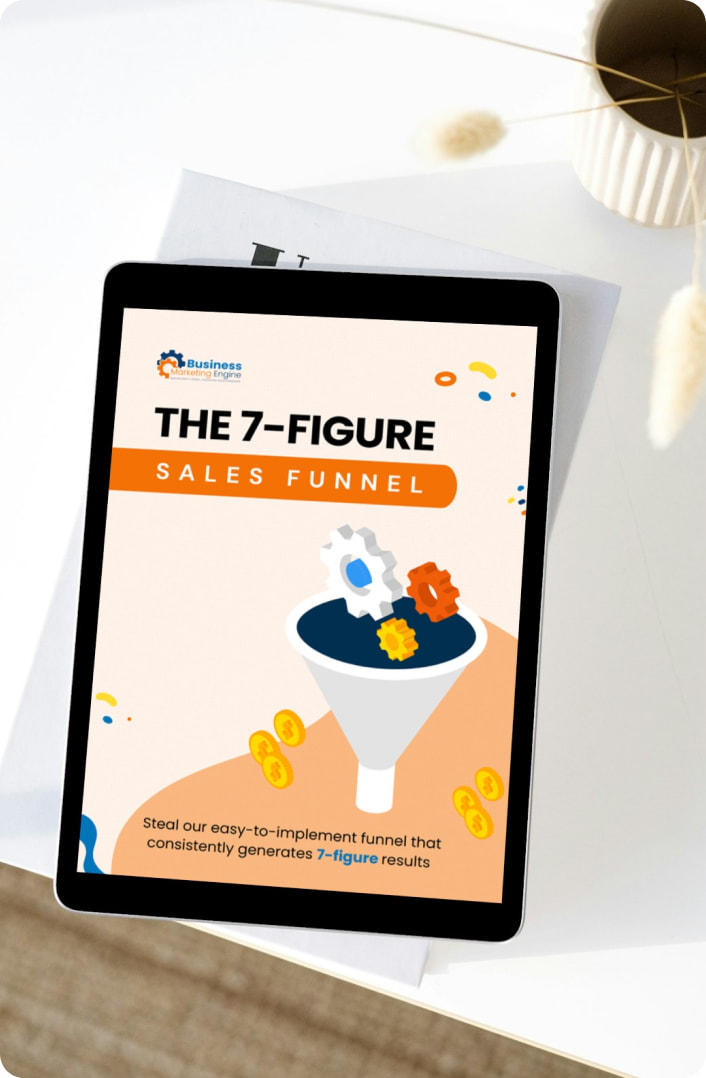Your target audience is essential to your business. Without an audience to market to purchase your product or services, your business would fail to make it. Knowing who to target to ensure your product or service is in the hands of the people who need it is key. Targeting anyone who does not need what you’re selling is a waste of time and earns you no revenue. So, it’s important to find out who your target audience is.
What Exactly Is a Target Audience?
A target audience is a specific group of people who would most likely be interested in your product or service. These are the people you should be marketing to. They should see your ads and be intrigued by your offerings. A target audience is based on multiple things like age, gender, income, location, interests and a host of other factors.
 What Are the Types of Target Audiences?
What Are the Types of Target Audiences?
Target audiences can be broken down into several categories that help to say more about the type of person that would buy your product or service. It can be a specific group of people like men, women or children that share a common interest like running or reading. Knowing your audience makes it easier to find them, and you advertise where they are.
To help break down the target audience you need even better, we can look at the following categories: interest-based, purchase intention, location and demographics.
Interest-based
An interest-based target audience is a group of people who share common interests, hobbies or entertainment preferences. If your target audience consists of mostly people who drink coffee all day long, it may be a moot point to advertise your special homemade lemonade drinks to them. What they are interested in and what you’re trying to sell are two completely different things. You need to look for coffee drinkers.
Purchase Intention
A purchase intention target audience is a group of people who have a specific purchase in mind. They have a pain point that needs to be met, so they are looking for the specific problem for that pain point. If you make heels and these people just recently underwent serious foot surgery, this would not be an audience with any intention to purchase from you. They’re looking for something entirely different — something that would appeal to walking with ease due to the status of their foot.
Certain individuals may even play a certain role when it comes to the purchase of your product, like a decision-maker or a supporter. A supporter is someone who may not have purchasing power when it comes to deciding on purchasing your product or service but waves heavily in the decision. The person who has to make the purchase decision considers the supporter an influence in their overall decision.
The decision-maker is someone who ultimately decides to purchase your service. Sometimes the decision-maker can also be the supporter, but most times they’re different people. When they’re different, you must also consider the supporter as a potential person to target for your product or service.
Let’s take the product Old Spice. Even though this is a product for men, it was found during marketing research that women are the ones who actually purchase the product for their men. What this did was open up another audience to target for this product — women.
Location
A location target audience is a group of people who live in a particular area or who live in an area with common characteristics. Here are a couple of examples: if you provide lawn services in certain neighborhoods, these areas will likely be within reasonable proximity of where you are located. There is no need to market to people living across the country when your services are local. Or, you may sell snow removal equipment that anyone, regardless of how far they live from you, can order online. However, you may decide that your marketing efforts would yield few results in sunny-side Florida because there’s limited chance for snow there.
Demographics
A demographics target audience is a group of people divided into smaller marketable categories such as age, gender, income, location, hobbies, educational level, profession, marital status, etc. Your target audience could consist of more than one type of demographic. The demographic you’re looking to market to is a target description of the type of person you’re looking to sell your product.
Steps to Determine Your Target Audience
Determining your target audience is a time-taking task. It involves taking the time to analyze consumer engagement, your current buyers, and taking other things as well into consideration. There are several things you can do to help determine your target audience.
Use Google Analytics
Google Analytics is a worthwhile tool for many reasons. One thing it can do is help you to know your audience. It offers much-needed information about the people who are visiting your site. Google Analytics can let you know what platforms they’re on and the type of content they’re engaging in. This helps you to make decisions about your potential customers and existing customers.
This data can help you make more data-driven decisions. Making decisions based on big data is good for the customer. It provides for a better customer experience overall. When your content is geared toward the needs of your customer, it sets them up for a good customer experience. They’re likely to stay on your site longer and provide you with a good ROI on marketing dollars spent.
Conduct Customer Analysis
One of the best ways to determine your target audience is to engage with your customers in person, on social media or through email. Ask them questions: put out surveys to get their feedback. Find out how old they are, where they live and what they enjoy.
Conduct Market Research
One of the things that help guide relevant decision-making when it comes to your marketing efforts is market research. Market research involves investigating where there are gaps in service that your product can fill. In this respect, it could actually lead you to a new target audience. Some of the ways you can do this are through:
- Focus groups: This is a sample size group of the target audience who respond to questions and provide information that gives the company a customer’s perspective of the product or service.
- Polls: Polls are quick responses to questions that usually yield a good response rate, unlike questionnaires and surveys that may be a little more in-depth.
- Field Trials: Field trials are an opportunity to test new products or variations of a current product or service. This can be done in stores or through other means. The performance of these initiatives usually provides great insight before rolling it out to a larger audience.
- Questionnaires: Questionnaires can be done online or offline, and can help provide marketers with the insight they need about their customers.
- Forms: Forms help marketers to learn specific information about their target audience related to demographics.
- Mail Surveys: Mail surveys are not new to these efforts. They are still a proven way to reach a large audience. It serves especially beneficial to get to those who have limited access to technology.
Analyze Competitors
Paying attention to what competitors are doing when it comes to who they sell to and how they go about it are good ways to determine your target audience. Are they focusing on the decision-maker, the buyer or both? Are they using offline channels to market to their customers as well as online?
Today’s consumers interact with brands via a variety of different marketing channels before deciding to buy something, so just as often as we analyze the online channels, we need to consider offline channels. Look at your competitor to see how they are marketing campaigns to offline channels.
 Create Buyer Personas
Create Buyer Personas
Creating buyer personas is an ideal way to learn the specific characteristics of the people that your target audience consists of. Personas help you determine the needs of the people you’re looking for, the demographics and their personalities. Personas can be created from different sources, like data, surveys and social media engagement. Use any creative methods you can think of to get a more complete perception of what your ideal buyer looks like.
Marketers don’t have to resort to just one buyer persona; there may be multiple. Consider creating between three to five buyer personas.
Define Your Target Audience
As important as it is to know who your target audience is, it’s just as important to know who your target audience is not. For instance, is your target audience men or men between the ages of 20 and 40? Those are two different audiences. So, just because a segment of the population is close to what you’re looking for, doesn’t mean they’re exactly who you’re looking for. Know who not to waste your marketing funds on.
Optimize and Revise
The longer your business interacts and flourishes, the more you understand your target audience. It’s also possible that your audience, depending on how your offerings continue to develop, may change along the way. Always optimize and hone personas to have the most up-to-date information about your target audience.
Ways to Reach Your Target Audience
Once you’ve created your buyer personas and have identified your target audience, the next question is, how do you reach them? Below are some ways to get started:
Social Media
If you have some form of business, odds are you are at least on one major social media platform. Start there. Use social media to reach your audience right where they are. Not all social media platforms are equal. Know your platform. Be familiar with the best ways to reach your audience on it.
There are things you would do on the Facebook platform that may not go over too well or may not be allowed on Instagram. Learn about your platform, then optimize that learning to reach your audience. If you cannot identify your audience, you may have learned that they don’t live on your social media platform, become familiar with where they live and use that platform to reach them.
Statistical Samplings
Use statistical samplings to reach your audience. Nielsen ratings are a great way to predict what shows people are watching and when is the best time to reach certain audiences.
However, just because your target audience is watching certain shows, doesn’t mean they’re sitting through the commercials. With the increased usage of DVR, people don’t have to watch commercials. Also, since those who listen to the radio have the option of switching stations during a commercial break, there’s no guarantee your commercial will be heard. These are all still very important things to consider when it comes to marketing. So knowing not just where to market, but timing plays an important part role in it.
Look to those ratings to learn the where and continue to do the necessary research to decipher the when.
Media Kits
Media kits from publishers provide clear data on the type of audience they reach. They can be leveraged into different segments depending on the brand. It’s important to note that when investing marketing dollars, to focus on the primary audience only. Even though a subscriber may pass their magazine on to someone else, it’s the paid subscriber you want to market to.
Third-Party Partnership
Marketing analytics platforms help to identify what outlets your target audience frequents or which television shows they enjoy watching. This data is garnered through marketing campaigns and it helps to discern patterns in consumer behavior, what contributes to sales, and much more. These types of analyses help marketers achieve a higher rate of return on their marketing investments by understanding what’s key in driving sales, brand awareness or both.
Conclusion
Identifying and understanding your target audience is a crucial component in actualizing a flourishing business. Here at Business Marketing Engine, we can supply you with all the tools needed for optimum success. Our efficient marketing strategy has helped business owners generate hundreds of leads every month along with a highly active ROI. Contact us today for a plan of action that not only works but works well.

 What Are the Types of Target Audiences?
What Are the Types of Target Audiences?
 Create Buyer Personas
Create Buyer Personas


